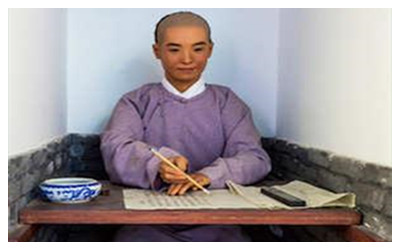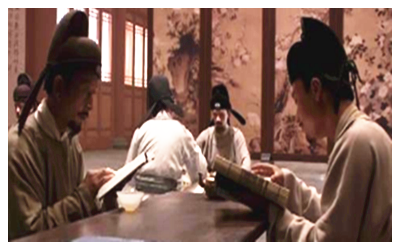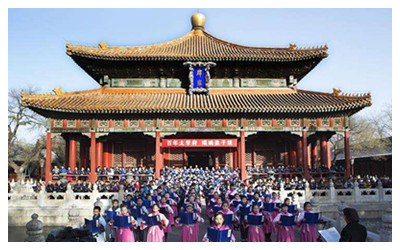
Education in China
Chinese education in ancient times
As an important way to select officials, the imperial examination system was started in the Sui Dynasty (581-618). Emperor Yangdi initiated imperial examination system in 606AD, which was also called Keju System. The first three of Jinshi were ranked Zhuangyuan, bangyan and tanhua respectively. All the jinshi would be given a post by the emperor. Their names would be engraved on the tablets.
 |
 |
 |
| Imperial Examination System | Hanlin Academy | Taixue and Guozijian |
Modern Chinese Education
Two thousand years of the traditional examinations were abandoned in 1912 when the Republic of China was founded. In the Imperial system the Hanlin Academy was the top academic instituion for 1,100 years. The accurate memorization of huge amounts of classical literature had had a stultifying effect on Chinese scholarship. Many of China's main universities have their roots in institutions set up by foreign missionary societies offering Chinese people new fields of knowledge for the first time...more
Today Chinese Education
Other institutions have grown from technical colleges that fueled China's need for engineering in the 1970s. Since the turn of the millennium China has reformed the university sector to the Western model. The proportion receiving tertiary education has risen from 1.4% in 1978 to over 30% now and there are over 2,000 accredited institutions. China's high population translates this into 7 million new graduates each year. The top 100 universities are being developed under the government's project 211 while the top 39 are groomed for top International status in project 985. There remain concerns that too much emphasis is placed on learning facts rather than creative thinking. The Bachelor's degree is normally four years of full-time study which include four areas: basic compulsory topics (Computer technology, English, Chinese, Mathematics, Politics, Physical Education); elective general topics; field of study compulsory topics; field of study elective topics. In this way a degree is more generalized than in the Western model. The Master's degree (硕士学位 Shuò shì xué wèi) is typically three full-time years for ‘academic’ subjects and two years for ‘vocational’ subjects.
Admission to university in China is based on the Annual College Entrance Examination (gaokao 高考) but recommendation from a school carries some weight. Priority to the poorer provinces is also given. The majority of universities in China are state funding and are subject to some government control. The cost for Chinese students are kept quite low; grants; loans and part-time work are used to fund study. The government also provides some funding for grants for students to study in China from abroad.
In general studying at a Chinese university is geared to accumulating facts and skills ; lecturers are rarely challenged by students and generally treated with more respect than in the West. Studying at university is seen as a privilege rather than a right.
However, China has rapidly become a major provider of world class studying opportunities, attracting many overseas students - particularly in Asia. In 2016, 397,635 international students are studying in China. Every year that the International rankings are published the universities in China go up a few places.







 Ask Questions ?
Ask Questions ?